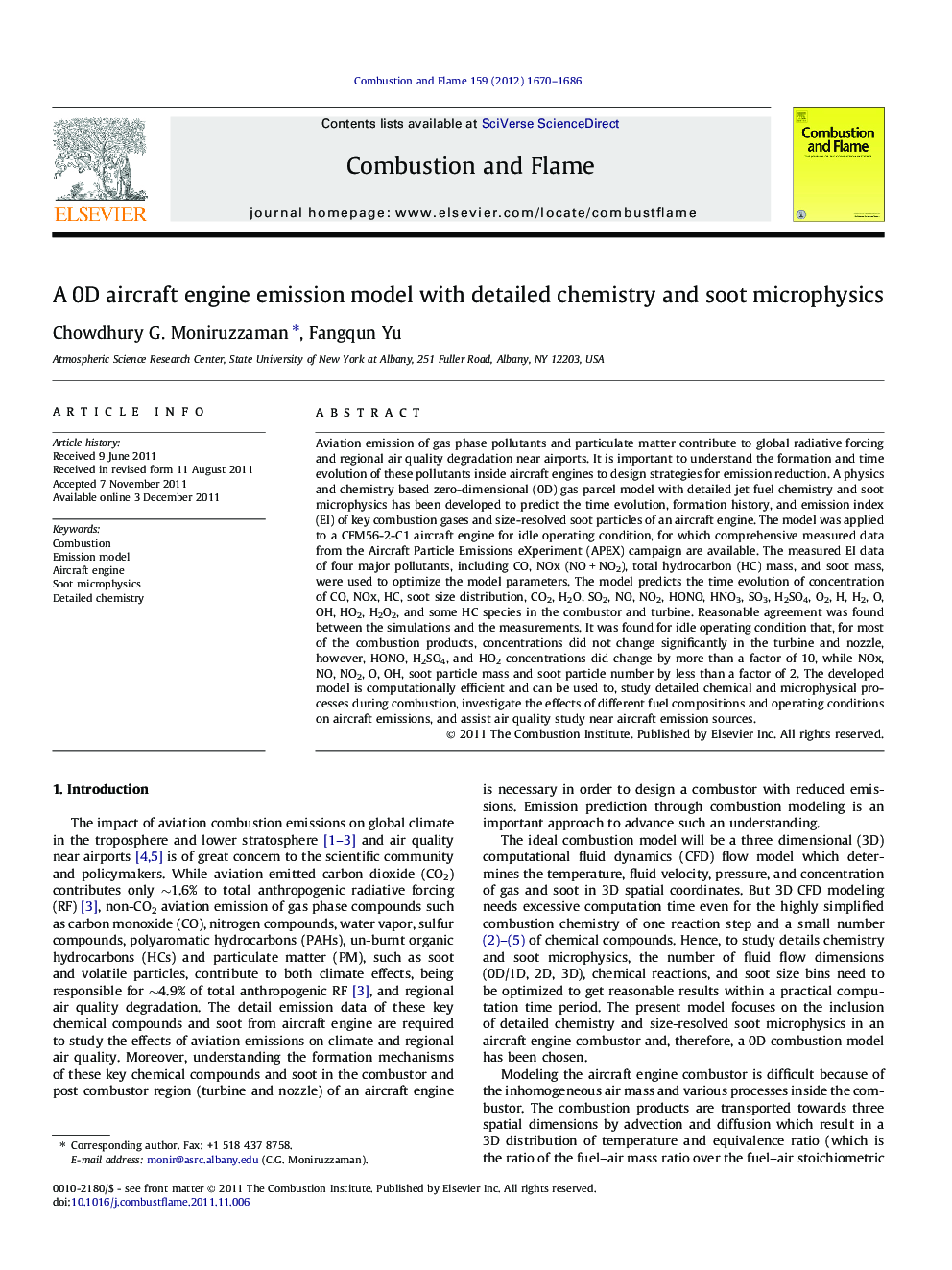| کد مقاله | کد نشریه | سال انتشار | مقاله انگلیسی | نسخه تمام متن |
|---|---|---|---|---|
| 166550 | 457785 | 2012 | 17 صفحه PDF | دانلود رایگان |

Aviation emission of gas phase pollutants and particulate matter contribute to global radiative forcing and regional air quality degradation near airports. It is important to understand the formation and time evolution of these pollutants inside aircraft engines to design strategies for emission reduction. A physics and chemistry based zero-dimensional (0D) gas parcel model with detailed jet fuel chemistry and soot microphysics has been developed to predict the time evolution, formation history, and emission index (EI) of key combustion gases and size-resolved soot particles of an aircraft engine. The model was applied to a CFM56-2-C1 aircraft engine for idle operating condition, for which comprehensive measured data from the Aircraft Particle Emissions eXperiment (APEX) campaign are available. The measured EI data of four major pollutants, including CO, NOx (NO + NO2), total hydrocarbon (HC) mass, and soot mass, were used to optimize the model parameters. The model predicts the time evolution of concentration of CO, NOx, HC, soot size distribution, CO2, H2O, SO2, NO, NO2, HONO, HNO3, SO3, H2SO4, O2, H, H2, O, OH, HO2, H2O2, and some HC species in the combustor and turbine. Reasonable agreement was found between the simulations and the measurements. It was found for idle operating condition that, for most of the combustion products, concentrations did not change significantly in the turbine and nozzle, however, HONO, H2SO4, and HO2 concentrations did change by more than a factor of 10, while NOx, NO, NO2, O, OH, soot particle mass and soot particle number by less than a factor of 2. The developed model is computationally efficient and can be used to, study detailed chemical and microphysical processes during combustion, investigate the effects of different fuel compositions and operating conditions on aircraft emissions, and assist air quality study near aircraft emission sources.
Journal: Combustion and Flame - Volume 159, Issue 4, April 2012, Pages 1670–1686